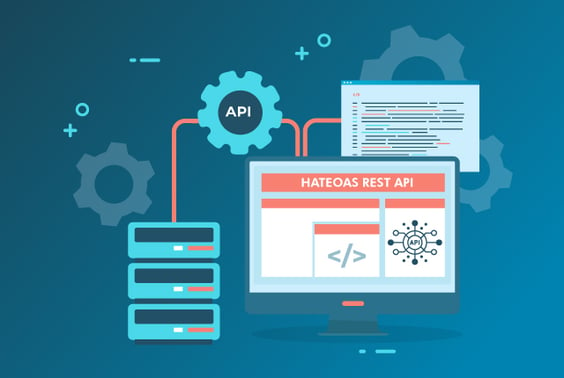1. What is HATEOAS
HATEOAS (Hypermedia as the Engine of Application State) is a constraint of the REST application architecture. HATEOAS keeps the REST style architecture unique from most other network application architectures.
The term “hypermedia” refers to any content that contains links to other forms of media such as images, movies, and text.
REST architectural style lets us use the hypermedia links in the API response contents. It allows the client to dynamically navigate to the appropriate resources by traversing the hypermedia links.
Navigating hypermedia links is conceptually the same as browsing through web pages by clicking the relevant hyperlinks to achieve a final goal.
For example, the given below JSON response may be from an API like HTTP GET http://api.domain.com/management/departments/10
{
"departmentId": 10,
"departmentName": "Administration",
"locationId": 1700,
"managerId": 200,
"links": [
{
"href": "10/employees",
"rel": "employees",
"type" : "GET"
}
]
}In the preceding example, the response returned by the server contains hypermedia links to employee resources 10/employees which can be traversed by the client to read employees belonging to the department.
The advantage of the above approach is that hypermedia links returned from the server drive the application’s state and not the other way around.
JSON does not have any universally accepted format for representing links between two resources. We may choose to send in the response body or decide to send links in HTTP response headers.
HTTP/1.1 200 OK
...
Link: <10/employees>; rel="employees"Both are good solutions.
2. How to Implement HATEOAS
In the real world, when we visit a website – we hit its homepage. The homepage presents some snapshots and links to other sections of websites. We click on the links and get more information and related links relevant to the context.
Like a human’s interaction with a website, a REST client hits an initial API URI and uses the server-provided links to access the resources it needs and discover available actions dynamically.
The client need not have prior knowledge of the service or the different steps involved in a workflow. Additionally, the clients no longer have to hardcode the URI structures for various resources. HATEOAS allows the server to make URI changes as the API evolves without breaking the clients.
Above API interaction is possible using HATEOAS only.
Each REST framework provides its way of creating the HATEOAS links using framework capabilities. For example, in Spring Boot HATEOAS tutorial, links are part of resource model classes that are transferred as the resource state to the client.
3. HATEOAS References
The following are the two popular formats for specifying JSON REST API hypermedia links:
3.1. RFC 5988 (web linking)
RFC 5988 puts forward a framework for building links that define the relationships between resources on the web. Each link in RFC 5988 contains the following properties:
- Target URI: Each link should contain a target Internationalized Resource Identifiers (IRIs). This is represented by the
hrefattribute. - Link relation type: The link relation type describes how the current context (source) is related to the target resource. This is represented by the
relattribute. - Attributes for target IRI: The attributes for a link included
hreflang,media,title, andtype, and any extension link parameters.
3.2. JSON Hypermedia API Language (HAL)
JSON HAL is a promising proposal that sets the conventions for expressing hypermedia controls, such as links, with JSON or XML. It is in the draft stage at this time.
The two associated MIME types are
media type: application/hal+xml
media type: application/hal+jsonEach link in HAL may contain the following properties:
- Target URI: It indicates the target resource URI. This is represented by the
hrefattribute. - Link relation: The link relation type describes how the current context is related to the target resource. This is represented by the
relattribute. - Type: This indicates the expected resource media type. This is represented by the
typeattribute.
There is no right or wrong in choosing a hypermedia link format for our application. We should pick up a format that meets most of our use case requirements and stick to it.

Comments